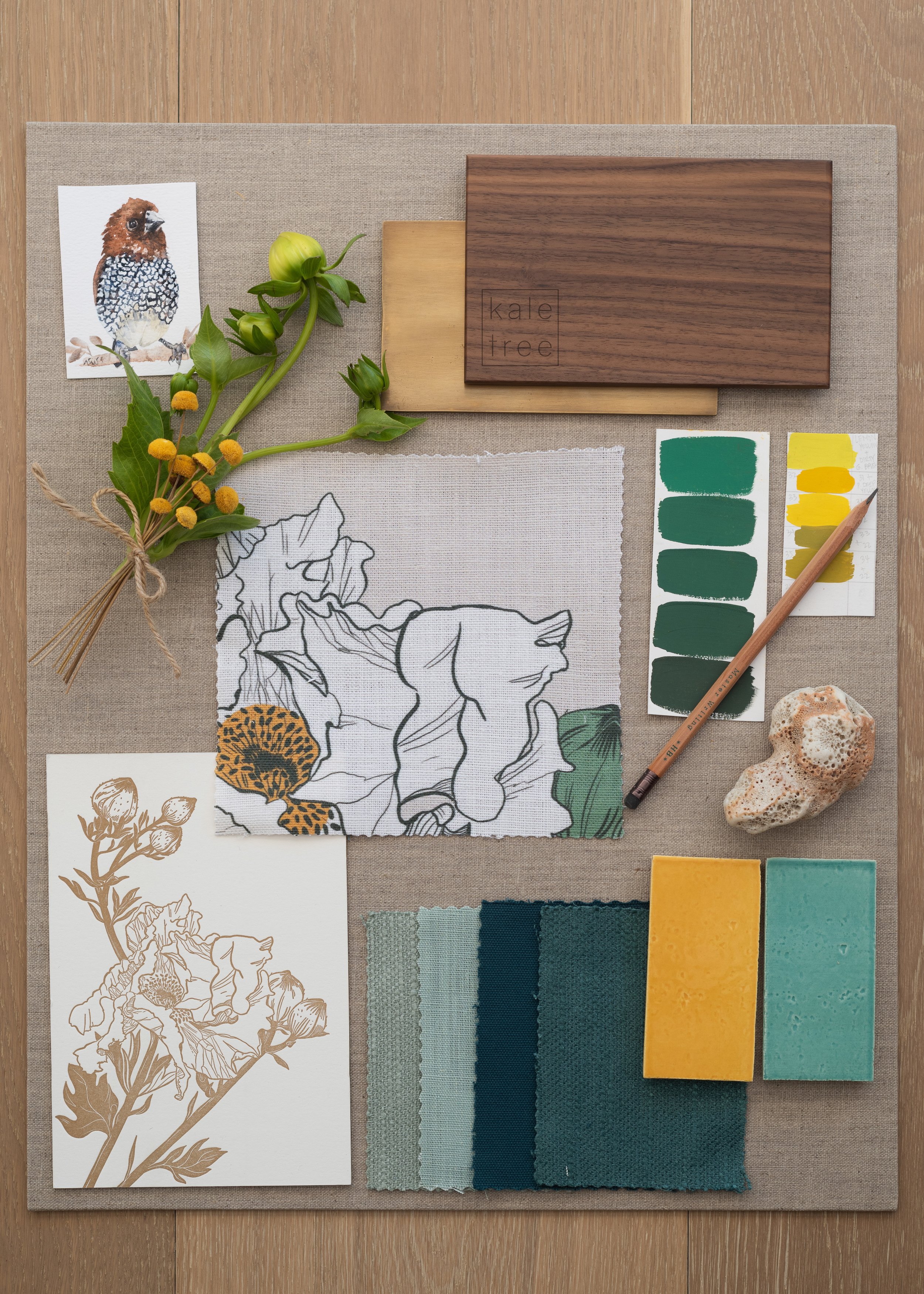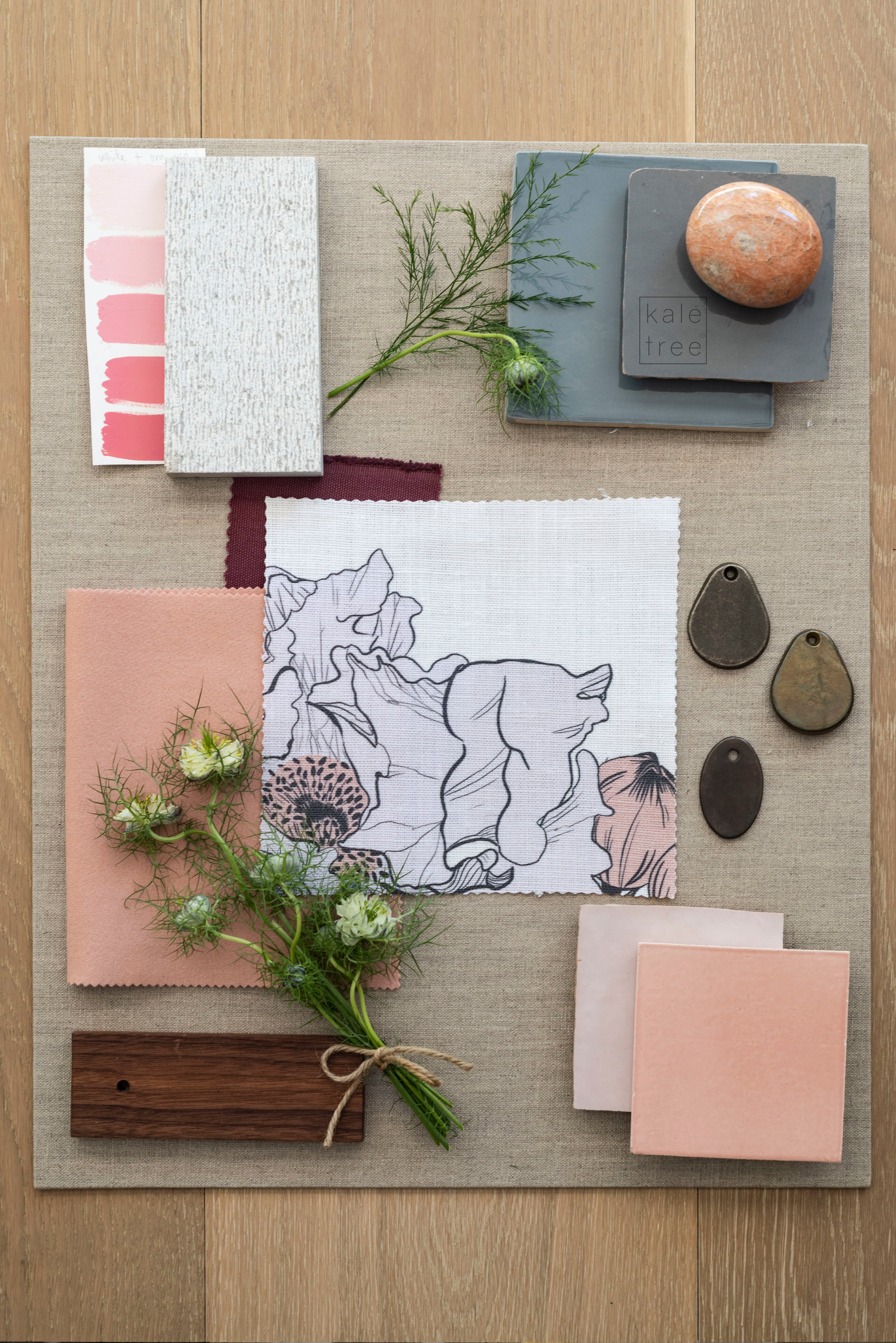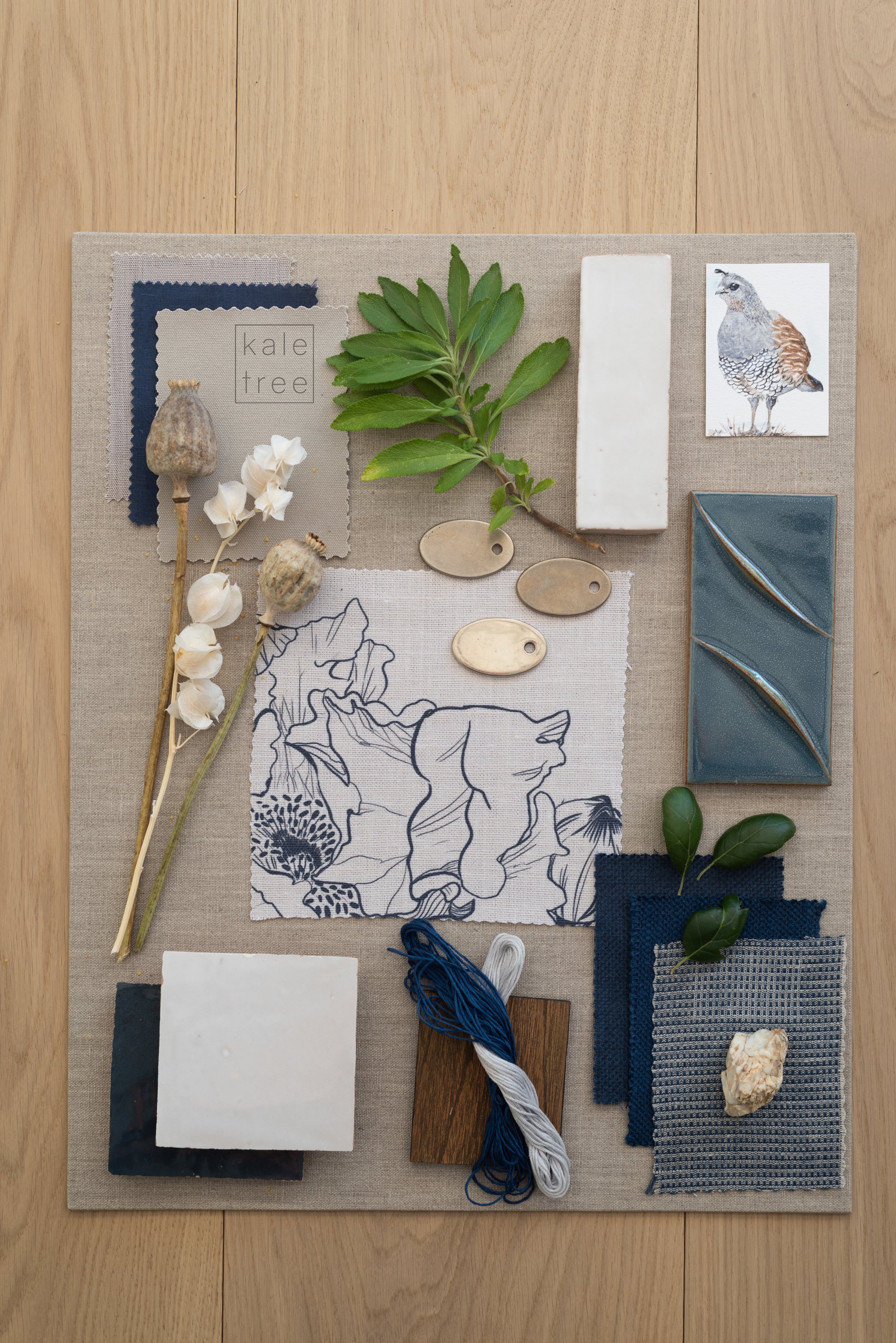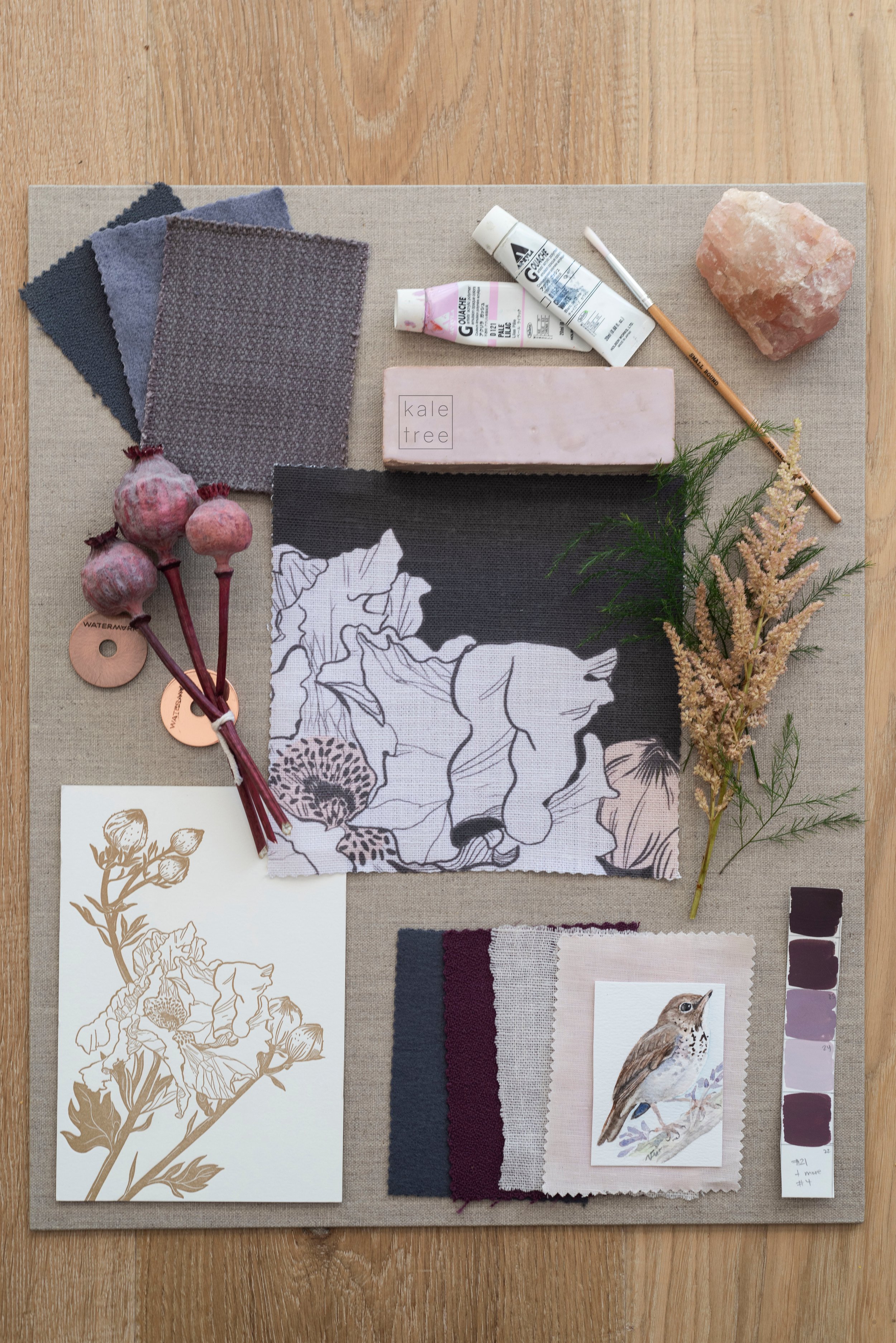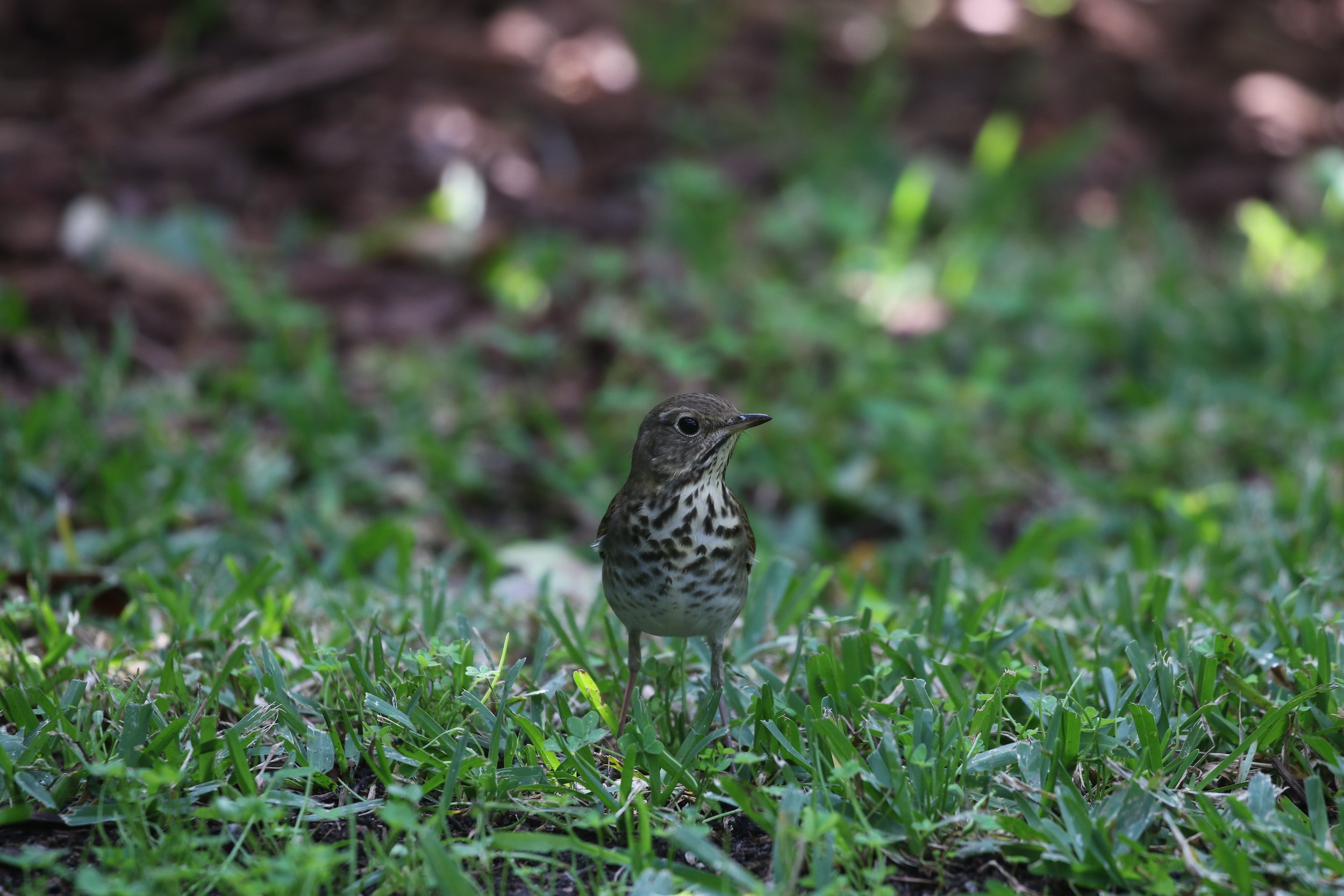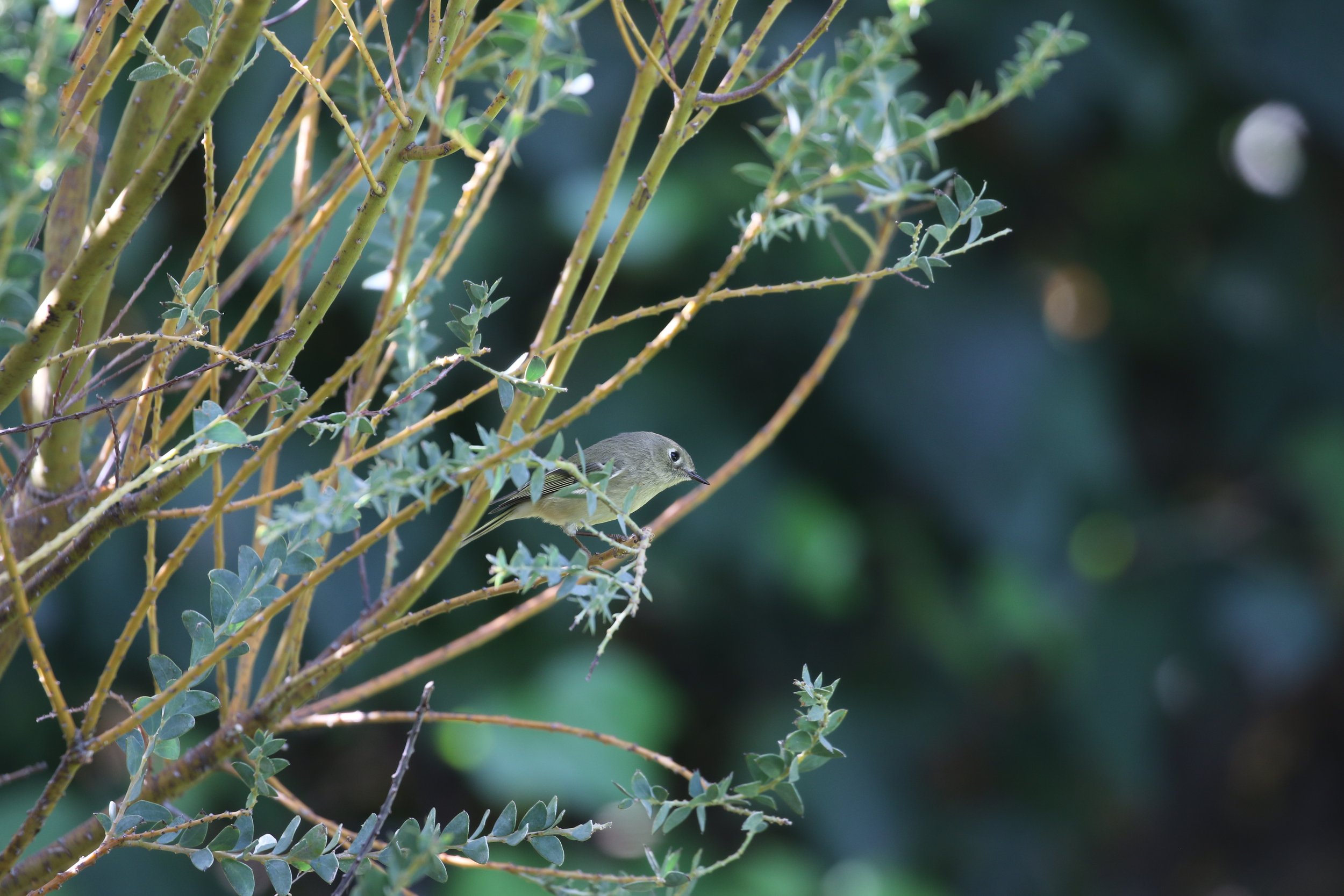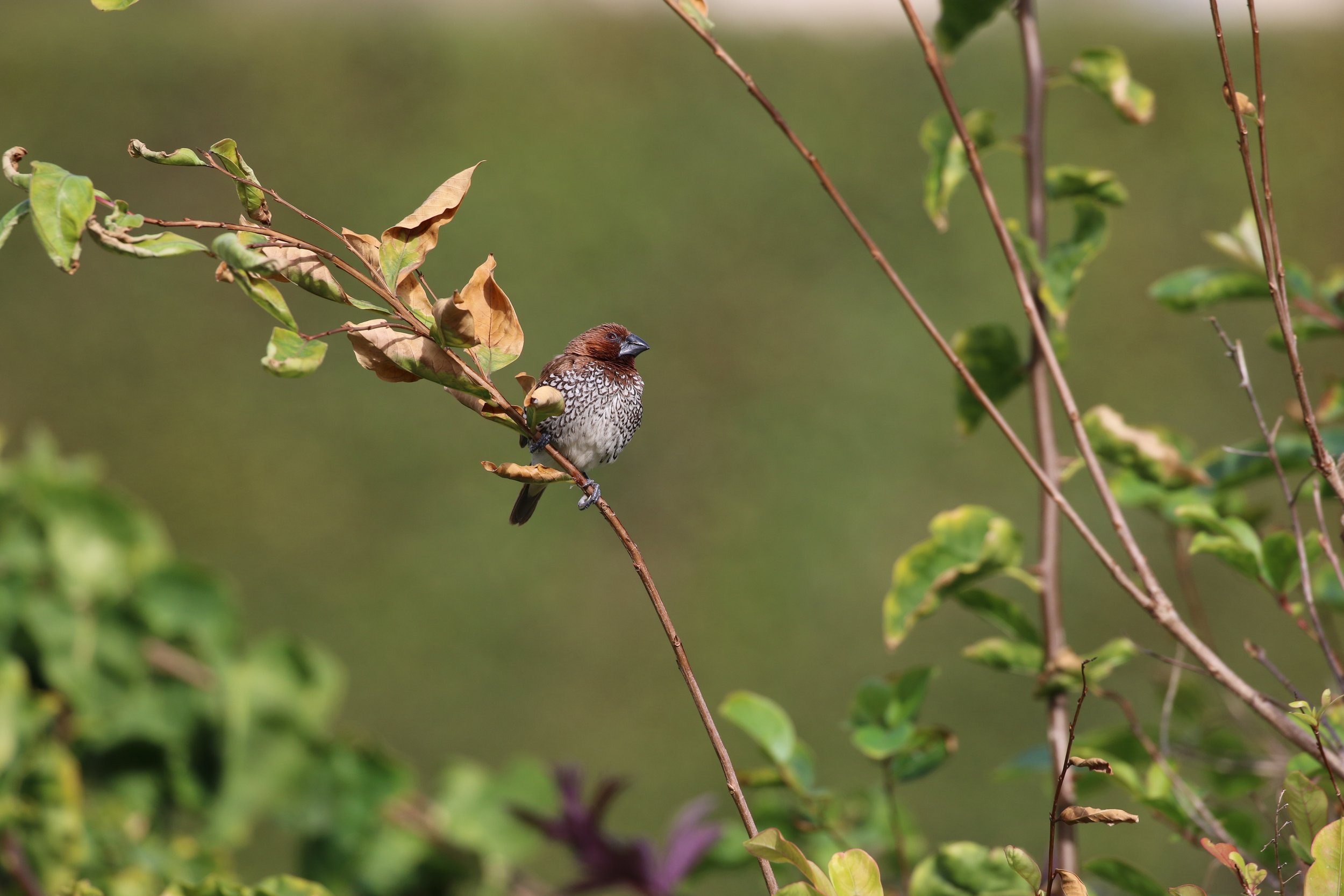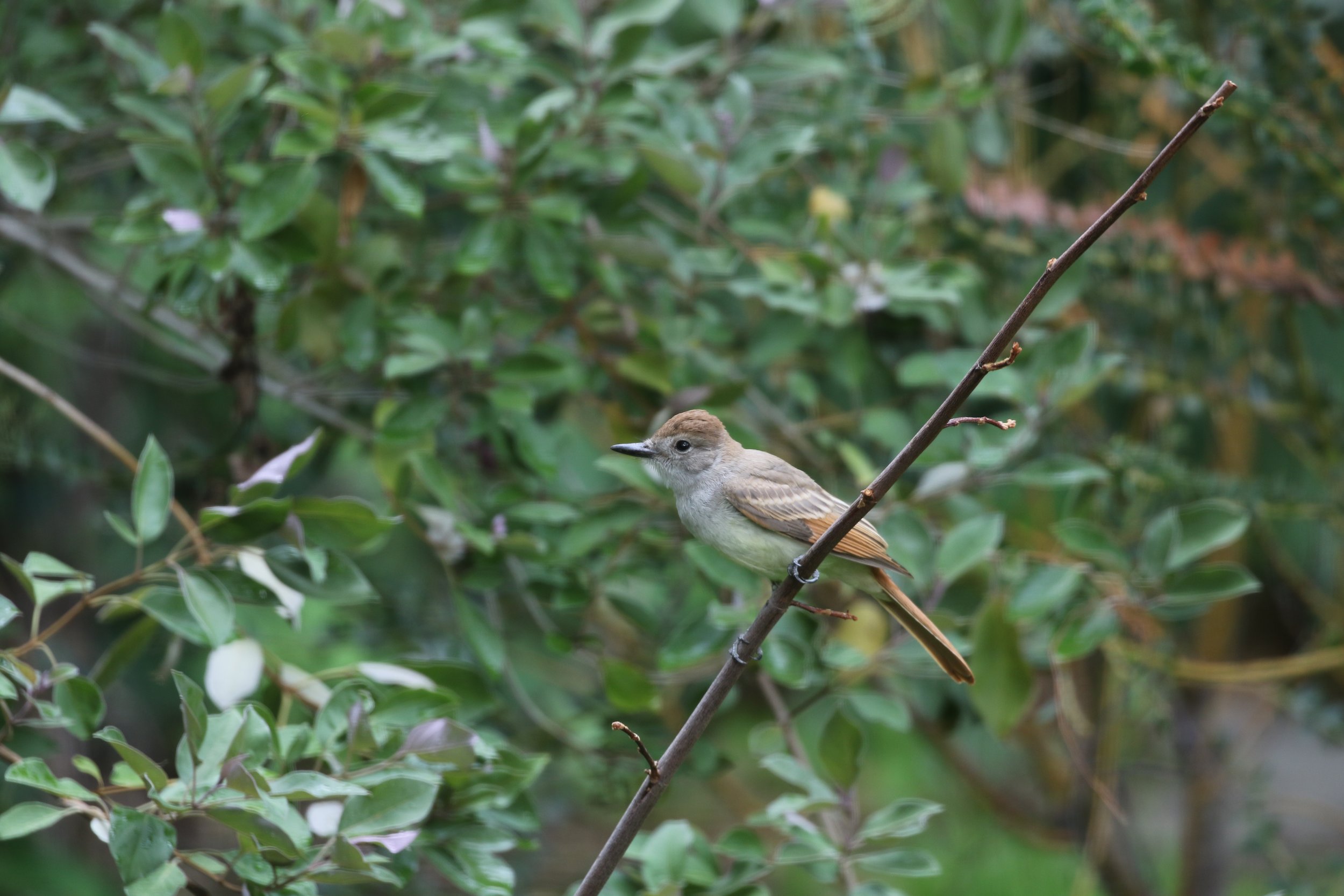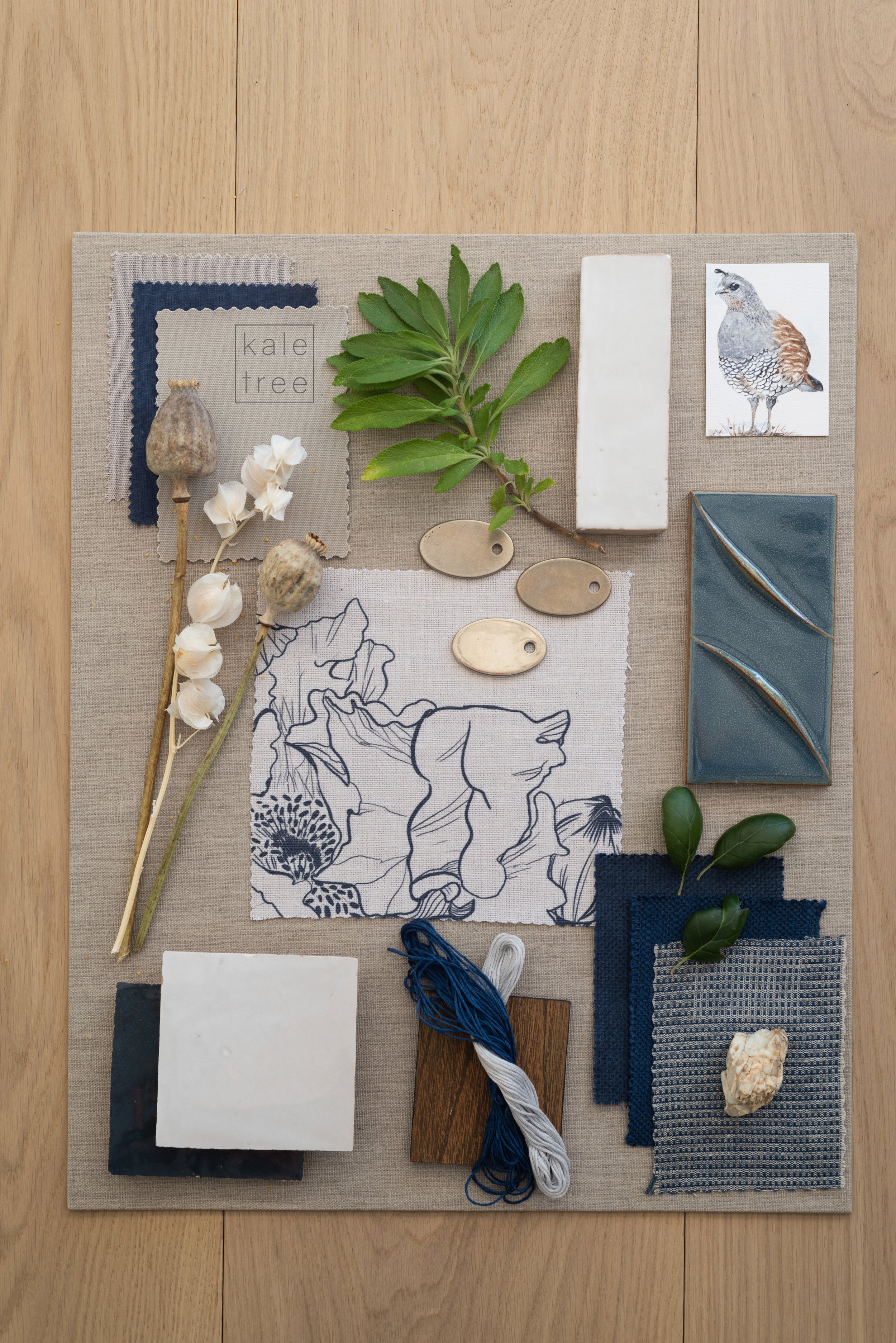LA Textile: Organic, Sustainable and Recycled Fiber Fabrics
The Kale Tree design team had a great time visiting LA Textile at the California Market Center. We set out to meet the best new designers, manufacturers, mills, and printers in the heart of downtown Los Angeles and are excited about the new friends and connections we've made.
Organic textiles were at the top of our sourcing list. We're happy to report that there were an increasing number of suppliers with organic fabrics in varying weights and colors on the showroom floor. While natural and organic textiles were displayed from across the globe, we found a strong presence of Japanese mills with elegant certified organic cotton twills, batiste, canvas, and satin weaves.
We also connected with the folks at Cotton Incorporated and had an interesting chat about U.S. Cotton and the importance of traceability and transparency in cotton fiber textiles.
Recycled fiber textiles are another fabric we are especially interested in designing in our studio. While luxury-level recycled fiber textiles are still somewhat in limited offerings, we were pleased to connect with mills offering recycled polyesters, textiles made from recycled water bottles, and Seaqual fabrics made from recycled ocean plastics. We love to see mills working with recycled fiber yarns and especially support efforts to remove plastics from the ocean.
Custom-printed textiles are at the heart of what we do. We love fabric, and we find it incredibly rewarding to see our nature-inspired illustrations realized as drapery, bedding, pillows, and a host of other home decor items. At the LA Textile event, we were delighted to connect with like-minded folk who care about sustainability and wellness in design, sourcing, and production methods.
The Kale Tree design team is working on a new organic textile collection for 2023 featuring California native flora and fauna. Inspired by the local wildlife of our Southern California mountains, deserts, woodlands, and beaches, we look forward to sharing more with you soon!
Mule Deer of the Verdugo Woodlands
A California mule deer (Odocoileus hemionus californicus) and fawn.
Humans and deer have lived alongside each other for a long time. In the past, this relationship has been mutually beneficial. Native Californians would routinely carry out small controlled burns to clear underbrush and prepare pastures, which created fresh new growth that deer love to eat. In 1907, the first law to protect deer was introduced in response to the increased interaction between deer and California’s growing population. Laws protecting natural predators such as bears, mountain lions, and wolves took a long time to follow (the endangered species act did not protect bears until 1970), a factor that allowed deer numbers to increase.
Over time, the number of deer that reside in the Wildland Urban Interface (WUI), “the zone of transition between unoccupied land and human development,”(1) and some residential environments has increased. This is perhaps the result of a combination of factors such as; a reduced number of natural predators, the increasing population that lives in or near the WUI, and increased availability of food in well-irrigated environments such as gardens.
As a result, deer have increasingly adapted to live in urbanized environments, and a common issue that arises from living alongside deer is damage to trees and gardens. Deer love to graze on fresh shoots and leafy green plants, which can stunt the growth of young trees and disrupt fruit production. Plants that deer find “highly palatable,” such as roses, apple trees, and members of the Malvaceae family, such as mallow, hibiscus, and abutilon, are also commonly found in domestic gardens.
Cajun hibiscus (Hibiscus rosa-sinensis)
The Verdugo mountains are a beautiful and unique example of the Wildland Urban Interface within Los Angeles. This small mountain range is surrounded by urban development, leaving an isolated pocket of nature within the city. “You have what is almost like a federally protected forest that has survived human urban growth all around it. It’s like an undiscovered Atlantis.”(2) Some neighborhoods that touch the Verdugo mountains include Glendale, Whiting Woods, Oakmont, La Crescenta Highlands, Pasadena, and Altadena. The people who visit and reside here consider it a privilege to live in this unique area where an almost undisturbed natural environment meets the city.
A California mule deer (Odocoileus hemionus californicus) grazing.
As a Certified California Naturalist, Sarah loves exploring the hiking trails in and around the Verdugo mountains. This area is teeming with wildlife “except for the absence of grizzly bears, the wildlife in the Verdugos is much as it was 200 years ago.”(3) California has six subspecies of mule deer (Odocoileus hemionus), The California mule deer (Odocoileus hemionus californicus) is commonly found in the Verdugos and surrounding areas.
One way we can live alongside deer and maintain a beautiful garden is by planting deer-resistant plants, many of which also make a beautiful aesthetic or fragrant addition to our garden. While no plant is one hundred percent deer-proof, there are some qualities of certain vegetation that deer tend to avoid.
Golden Currant (Ribes Aureum)
Prickly or furry plants are a good place to start. Some examples include the Fuchsia flowered gooseberry (Ribes speciosum) and the California barberry (Berberis pinnata). The California barberry’s (Berberis pinnata) prickly leaves make it unpleasant to eat, but it also has beautiful yellow flowers, making it an appealing garden plant. The Fuchsia flowered gooseberry (Ribes speciosum) has gorgeous bright red dangling flowers that also attract hummingbirds to your garden.
Cleveland sage (Salvia clevelandii)
Deer also tend to avoid aromatic plants such as Sages (Salvia sp), Cleveland sage (Salvia clevelandii), and Hummingbird sage (Salvia spathacea) have a beautiful smell that deers dislike.
Tough and leathery plants can be hard for deer to chew. The California bush anemone (Carpenteria californica), a shrub with beautiful white flowers, and the Big berry manzanita (Arctostaphylos glauca) have tough trunks. Ground cover such as Emerald Carpet (A. uva-ursi X nummularia) is a leathery plant that grows densely on the ground, which can also reduce weeds.
California Poppies (Eschscholzia californica)
Fast-growing plants such as the California wild grape (Vitis californica) are a good option, as their rapid rate of growth allows them to recover from being grazed on as they grow out of reach from the deer. Spring wildflowers are also a good option as there are so many of them; even if a few are eaten in amongst all the new growth of the season, plenty still survive to make a beautiful garden.
A California mule deer (Odocoileus hemionus californicus) grazing.
If all else fails, a deer repellent spray can be applied to the plants in your garden. This non-toxic spray (which won’t hurt the deer or the plant) leaves a bad taste in their mouth, which is intended to slow grazing. There is a variety of homemade and store-bought options available.
An Oak Titmouse (Baeolophus inornatus) resting on a water dish.
Taking all of this into account, the remaining wildlife on Earth is a fraction of what it once was, “Extinctions have been a natural part of the planet’s evolutionary history. 99% of the four billion species that have evolved on Earth are now gone.”(4) We treasure day-to-day encounters with the wildlife that remain. Living amongst wildlife in the Wildland Urban Interface is a unique privilege; taking a break from the city and enjoying a hike in this pocket of nature is a wonderful gift. Being mindful of the wildlife in the Verdugo mountains can take the form of gently suggesting not to eat the plants in your garden (through plant choice or other options) or leaving a bowl of water out on hot summer days . This is a rewarding part of the experience of living and visiting here; in return, we get to live alongside these magical animals and watch them thrive.
A California mule deer (Odocoileus hemionus californicus) grazing.
Bibliography
“What Is the Wui?” U.S. Fire Administration, 8 June 2022, https://www.usfa.fema.gov/wui/what-is-the-wui.html.
“A Hidden Mountain Treasure in the City.” Los Angeles Times, Los Angeles Times, 19 May 1998, https://www.latimes.com/archives/la-xpm-1998-may-19-mn-51296-story.html.
“A Hidden Mountain Treasure in the City.” Los Angeles Times, Los Angeles Times, 19 May 1998, https://www.latimes.com/archives/la-xpm-1998-may-19-mn-51296-story.html.
Ritchie, Hannah, et al. “Extinctions.” Our World in Data, 15 Apr. 2021, https://ourworldindata.org/extinctions.
Other Resources
“Mule Deer (Odocoileus Hemionus).” CDFW, https://wildlife.ca.gov/Regions/6/Deer/Natural-History.
Kubey, Elizabeth. “Deer Resistant Native Plants.” California Native Plant Society, 4 Apr. 2018, https://www.cnps.org/gardening/deer-resistant-native-plants-5588.
Sarah Barnard, WELL AP + LEED AP, is a leading designer of personalized, sustainable spaces that support mental, physical, and emotional wellbeing. She creates highly personalized, restorative spaces that are deeply connected to art and the preservation of the environment. An advocate for consciousness, inclusivity, and compassion in the creative process, Sarah has appeared in Architectural Digest, Elle Décor, Vogue, HGTV, and many other publications. In 2017 Sarah was honored as a “Ones to Watch” Scholar by the American Society of Interior Designers (ASID).
Birdwatching as mindfulness: Creative connections within the bird watching community.
The benefits of looking at nature are everywhere, no matter where you live. Outdoor recreational activities such as hiking and being in nature promote feelings of well-being. Recent research by academics at the University of Exeter, the British Trust for Ornithology, and the University of Queensland suggests that birding, in particular, has mental health benefits. Researchers in the UK recently determined that people who saw more birds in their daily lives experience less stress and depression. Bird-watching is a practice that encourages mindfulness and patience. Simply watching a bird feeder can be beneficial for your mental health.
Birding also benefits your mental health through the community and friendships that it creates. A love of birding connects people from all walks of life and is what initially drew interior designer Sarah Barnard, WELL AP + LEED AP, to the artwork of Vivienne Edwards.
The watercolor paintings of small birds included in several of our mood boards for the Matilija Poppy Textile and the Mallow Textile are by the artist Vivienne Edwards. Vivienne is based in South Africa and makes small watercolors of birds that she encounters in the natural environment around her. Sarah discovered Viviennes' work one day by chance, drawn to the intimacy of their small size (2.5 x 3.5 in) and how they reflect the artist's relationship with her natural surroundings.
Sarah is an avid birder and felt that Vivienne's paintings would be a special addition to her art collection. Sarah commissioned a small set of paintings from Vivienne based on photographs Sarah took of favorite birds in her garden.
These magical birds are featured in a series of Kale Tree mood boards, whose nature-inspired luxury eco fabrics incorporate biophilic prints inspired by the intersection of art, design, and nature. Sarah thought these paintings contributed to the overall feeling of these mood boards, which feature a series of natural materials and textures that help visualize the collection of objects that make up an interior space.
The bird featured in this Kale Tree mood board for the Matilija Poppy Textile in Putty is a Ruby-crowned Kinglet (Regulus calendula); this is a tiny, very cautious bird that can be quite timid. Sarah has mainly spotted the Ruby-crowned Kinglet in the Acacia cultriformis tree in her garden, which it uses as a safe passage to the water bowl. It is a fairly solitary bird that does not stay out in the open for too long. Its ruby crown is very subtle, making it difficult for her to identify at first, and she was very happy when she did. The hand-drawn pattern of this floral textile is inspired by Matilija Poppies (Romneya coulteri), a favorite California native flower.
The Hermit Thrush (Catharus guttatus), is a bird with which Sarah feels a real fascination and kinship. Of all the songbirds, the Hermit Thrush is considered to have one of the most beautiful songs. The first time Sarah saw a Hermit Thrush, she was overcome and entranced by the beauty of this bird which felt like it had a magic quality. The Hermit Thrush is quite solitary; it moves along the edges of the garden with cautious stealth, so it feels like a special moment when it is spotted. Hermit Thrushes seldom visit backyards making this sighting and painting all the more special, a beautiful and meaningful addition to the Matilija Poppy Textile (Midnight) mood board from Kale Tree.
The mood board for the Matilija Poppy Textile (Bluestone) features a painting of the California Quail (Callipepla californica), the California state bird. This bird has beautiful feather patterns and enchanting qualities similar to the hermit thrush. Sarah had only ever seen California Quails in the desert until she moved to her new house, where she saw a pair walk across her patio one day. This experience was delightful and magical as it possibly meant they were nesting nearby. Sarah intends to plant a quail bush (Atriplex lentiformis) in her garden to encourage the birds to stay a while.
The painting featured in the mood board for the Matilija Poppy Textile (Natural) is of a Scaly Breasted Munia (Lonchura punctulata). You can usually find this small songbird in grasslands, gardens, and fields; the scaly spots on its underbelly and the color palette of its feathers compliment the stamens in the center of this poppy textile. Sarah first saw this bird in her garden and had never seen a bird like it before. She was surprised to learn that it was an introduced species from South East Asia. On watching this bird, she was struck by how familial and social they are; they are hardly ever seen alone and are often spotted sharing food and space. The Scaly Breasted Munia is also a lot less timid around humans, usually happy to sit and listen to a little bit of a human-to-bird conversation.
A painting of a Bewick's Wren (Thryomanes bewickii) is paired alongside a series of natural materials in the mood board for the Mallow Textile (Evening Mauve). The Bewick's Wren was originally one of Sarahs' favorite birds and has been in Sarahs' life for a long time. At her last house, a mother Bewick's Wren, taught her babies to eat suet cake from her bird feeder. The mother wren would also leave baby birds in a bush in Sarahs' garden while they went to forage, allowing her to spend some time with these usually solitary birds. Although they are usually found in dry bushy areas, the Bewick's Wren is also at home in gardens and parks in suburbs and cities. Its ability to live in natural and built environments creates a lovely allegory reflecting the design philosophy behind this floral fabric.
In this last mood board, a painting of an Ash-throated Flycatcher (Myiarchus cinerascens) accompanies a swatch of the Mallow Textile (Midnight Forest). These birds are often found in dry places, and as a result, they don't need to drink much water. Instead, they get the water they need from their food. Sarah often sees these birds in her garden, but explains that patience is required as they are usually on a perch somewhere, sitting, waiting, and surveying for insects that they catch in mid-flight.
Vivienne Edwards is a self-taught artist from South Africa who loves to work with the unpredictability of watercolors. She is fortunate to live in a wildlife-rich region with abundant bird life and wetlands. Her work takes inspiration from the small creatures in the natural environment around her, going about their daily lives with such purpose and energy. It is often a show of vulnerability from this wildlife that prompts what she decides to paint, such as a Sparrow delicately picking a sprig of parsley for its young.
Sarah and her team love working with other artists, especially those who celebrate the beauty of nature and inspire joy through their work.
Bibliography
“Beautiful Birding: 7 Mental Health Benefits of Bird Watching.” Happiness.com, 27 Jan. 2022, https://www.happiness.com/magazine/art-culture-leisure/mental-health-benefits-of-bird-watching/.
Leahy, Christopher W. “Teaching Your Mind to Fly: The Psychological Benefits of Birdwatching.” Princeton University, The Trustees of Princeton University, 31 July 2021, https://press.princeton.edu/ideas/teaching-your-mind-to-fly-the-psychological-benefits-of-birdwatching.
Ray, Heather. “A Dose of Nature: Why Birding Will Boost Your Mental Health.” Birds and Blooms, Birds and Blooms, 27 Apr. 2022, https://www.birdsandblooms.com/birding/birding-basics/birding-health/#:~:text=Researchers%20in%20Kentucky%20found%20that,beneficial%20to%20your%20psychological%20health.
Sarah Barnard is a WELL and LEED accredited designer and creator of environments that support mental, physical and emotional wellbeing. She creates highly personalized, restorative spaces that are deeply connected to art and the preservation of the environment. An advocate for consciousness, inclusivity, and compassion in the creative process, Sarah has appeared in Architectural Digest, Elle Décor, Vogue, HGTV and many other publications. In 2017 Sarah was recognized as a "Ones to Watch" Scholar by the American Society of Interior Designers (ASID).
Night Shift Pollinating: the Magic of Moths
Nature enthusiasts and scientists alike are well aware that pollination is crucial for environmental well-being. Insects such as bees and butterflies have experienced a well-deserved moment in the spotlight for being the primary sources of pollination for our environment. However, this could be a case of accidental bias on our part. New research has found that multiple species of magnificent yet harshly misunderstood moths are hard at work while we are asleep, picking up the pollination shift where bees, butterflies, and other daytime pollinators left off.
Historically, moths and other nocturnal pollinating insects have not been included in mainstream research. Because of this accidental oversight, we knew very little about the extensive pollination efforts of these mysterious nocturnal creatures. However, new research on nocturnal pollination has allowed us to turn our attention and appreciation towards the moth, a beautiful and diverse insect species that we now know is part of the pollination team. The Royal Society conducted a study in which they swabbed pollen from 883 moths. The scientists found that 381 moths out of their sample contained pollen from more than one plant species on their fuzzy underbellies. These results suggest that moths visit and pollinate multiple plants at night and are highly influential in wild plant pollination. Moths pollinate some of the same plants visited by bees and other daytime pollinators. This new research shows that bees, butterflies, and moths work in a holistic combined effort towards pollination and environmental wellness.
Moths tend to pollinate flowers with strong, sweet smells emitted at night. They are especially attracted to flowers that produce ample nectar that is easy to access through long, tubular flowers. They are most attracted to flowers with pale white and dull red colors, hues of pink and purple, and large petals with clusters.
The responsibility of pollinating our planet falls on the shoulders of many species, as well as Earth's natural elements of wind and water. Protecting our planet's natural pollinators improves the health of our ecosystem and, in turn, improves our well-being. Pollinators are not only crucial to our environment, but they are also incredibly essential for human life and function. The United States Environmental Protection Agency states, "pollinators provide humans with one in every three bites of food we eat, cotton to make clothing and other items we depend on, and habitats and food for countless other animals.
Entomology Moth Drawer by Tradescant & Son depicts tattered and delicate hand drawn moths, some showing their age to create a raw and honest depiction.
As we learn more about moths and their vital role in the holistic pollination of our planet, we become better equipped to protect them and Earth's pollination systems as a whole. There are many steps you can take to help protect moths and promote pollinator well-being:
Moth textile by Kale Tree celebrates the beauty of moths in a 100% linen fabric.
While most pollination-protecting efforts can help the wide variety of pollinating species, one hazard unique to pollinating moths is light pollution. Avoid the use of lighting in your garden as artificial lights can disorient moths, impairing their abilities to find mates, protect themselves from predators, and find flowers to pollinate.
Plant moth-approved flowers in your garden that bloom in a variety of seasons
Plant in "clusters" so that your nighttime pollinating visitors can easily access flowers to pollinate in your garden
Eliminate the use of pesticides and herbicides.
Kale Tree Studio gathers much inspiration from the natural scenery around us to create our products, and as such, our products are made with a commitment to sustainability and environmental wellness. For example, our moth rug is inspired by the neutral creams and toasted grey hues of a moth's wing, available in Bamboo Silk or 100% New Zealand Wool. As a studio with a mission to promote health and well-being, Kale Tree cares deeply about protecting all of Earth's natural pollinators. With newly available research, we can help moths achieve their much-deserved spotlight on the pollination stage, along with their daytime pollinating friends.
Damaged Lace by Tradescant and Son was inspired by the ethereal beauty of pre-loved antique lace combined with the raw honesty of the destruction of lace eating moths.
Resources
CNN Health. “Moths play a vital role in pollinating flowers and plants, new research suggests.”
The Royal Society Publishing. “Nocturnal pollinators strongly contribute to pollen transport of wild flowers in an agricultural landscape.”
U.S. Forest Service. “Pollinator Syndromes.”
Xerces Society. “The Night Shift: Moths As Nocturnal Pollinators.”
United States Environmental Protection Agency. “Protecting Pollinators.”
Pollinator Partnership. “About Pesticides.”
Nature at Home: Botanical Textiles from Tradescant & Son Now Available at Kale Tree Shop
Sarah Barnard is now the exclusive California representative for Tradescant & Son through Kale Tree Shop's online marketplace. The line features a wide range of nature-inspired luxury eco fabrics and wallpapers made with a sustainability-minded production process.
Sarah Barnard is now the exclusive California representative for Tradescant & Son through Kale Tree Shop's online marketplace. The line features a wide range of nature-inspired luxury eco fabrics and wallpapers made with a sustainability-minded production process.
The foundation of Sarah Barnard's practice is a belief that interior environments should contribute to wellbeing, both emotionally and globally. Barnard's work focuses on sustainability, emphasizing the importance of nature, both through conscious sourcing and as the inspiration for many of her designs.
The designer's use of natural themes and environmentally conscious materials spoke to the sensibilities and priorities of Tradescant & Son, who recognized Barnard as an ideal representative for their line. Tradescant & Son director Amy Hardman says, "Our 100% linens and the relaxed yet stylish look to our designs promote a holistic and contemporary feel. This, together with the fact that we share a commitment to ensuring sustainability wherever possible by using locally woven fabrics and printers, is a fantastic and exciting foundation for our relationship with Sarah Barnard Design."
The fabrics and wallpapers feature a wide variety of natural themes, from a graphic striped wallpaper composed of vibrant hummingbirds to linen textiles inspired by historic entomology archives from the University of Oxford Museum of Natural History, softly patterned with moths or beetles. With a range of bird fabrics, butterfly patterns, and botanical prints, the timeless patterns nod to historical, scientific illustrations, while their colors and design have a contemporary feel suitable for a diverse array of settings.
On the collaboration, Barnard noted that "As a birder, naturalist, and avid gardener, I was drawn to Tradescant & Son's collection of biophilic prints. Particularly when designing for metropolitan areas, I like to turn to natural motifs to stand in for nature that may not be as readily available for someone with a city view. The entire Tradescant & Son collection offers an impressive array of options when looking to bring the experience of wildlife into an interior."
These products are available for purchase through the website www.kaletree.com. Additional support is available for design and trade professionals by contacting shop@kaletree.com.
Sarah Barnard is a WELL and LEED accredited designer and creator of environments that support mental, physical and emotional wellbeing. She creates highly personalized, restorative spaces that are deeply connected to art and the preservation of the environment. An advocate for consciousness, inclusivity, and compassion in the creative process, Sarah's work has been recognized by Architectural Digest, Elle Décor, Real Simple, HGTV and many other publications. In 2017 Sarah was recognized as a "Ones to Watch" Scholar by the American Society of Interior Designers (ASID).






